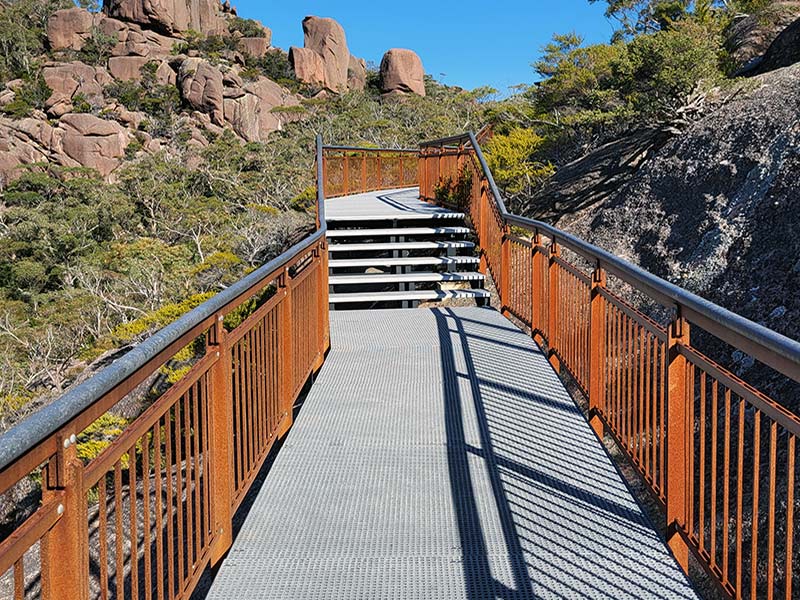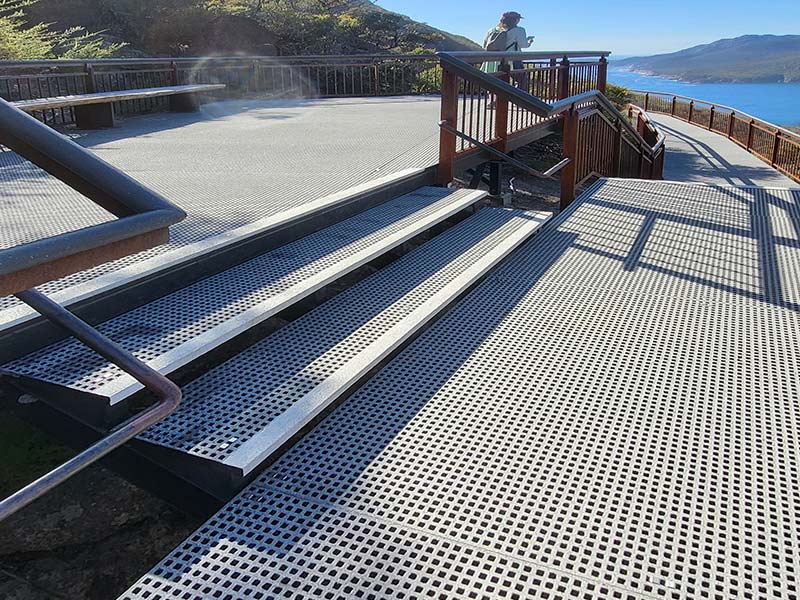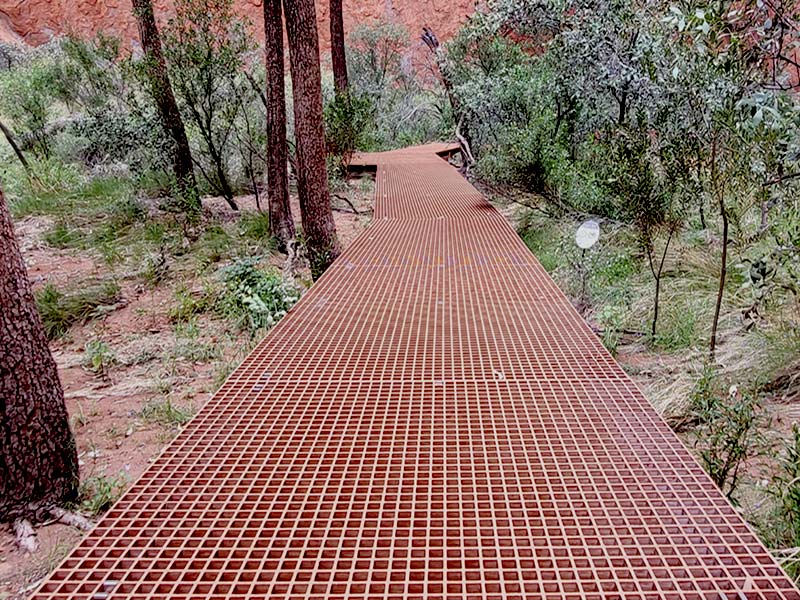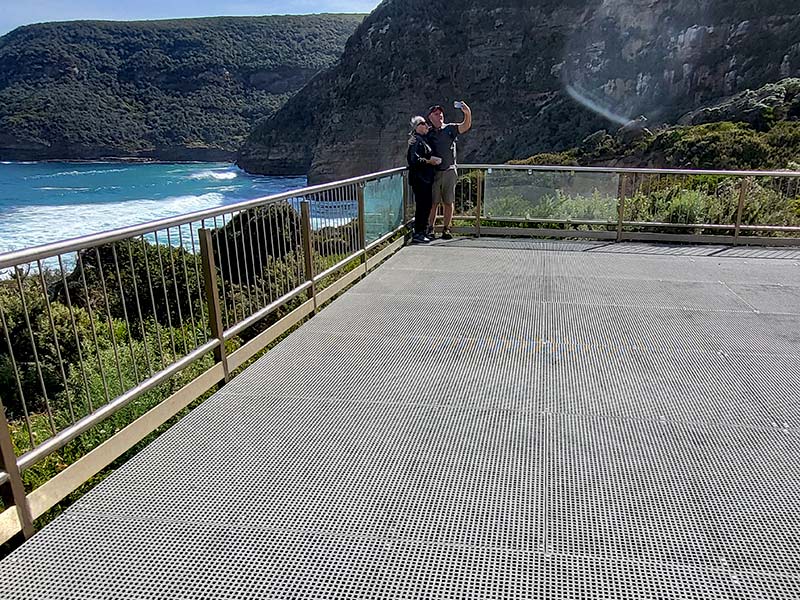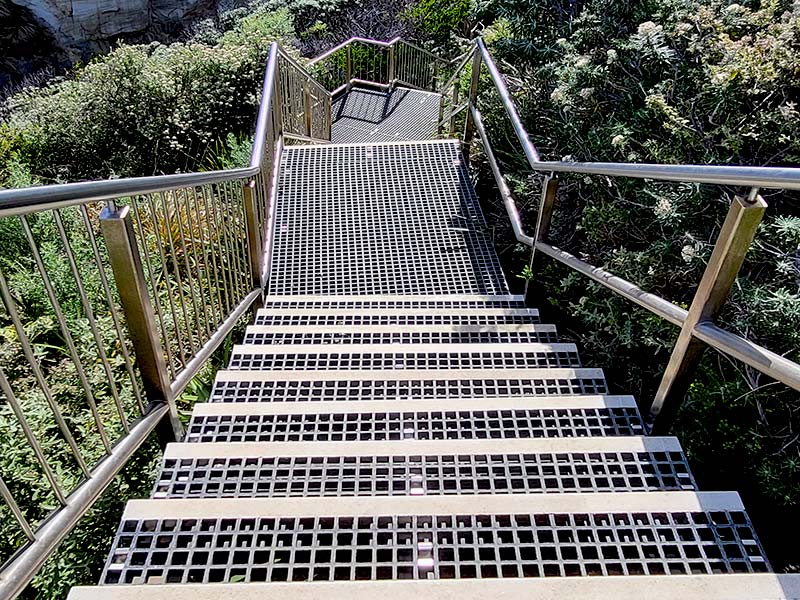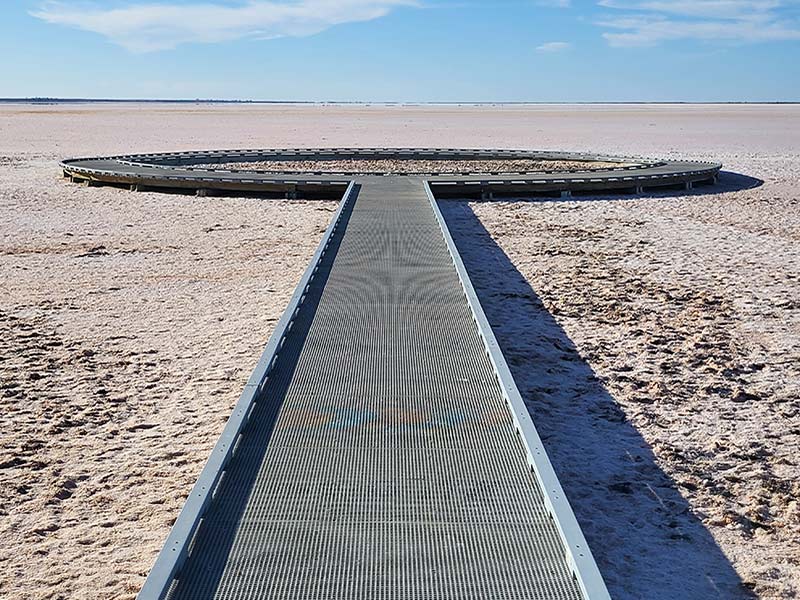FRP Grating for Boardwalk Decking & Pathways
Key Benefits of Archatrak FRP Grating for Boardwalks
- No rotting, twisting, warping, splintering, splitting
- No loose, dangerous nails or screws
- No rusting or corrosion
- Excellent slip resistance in wet or dry conditions
- Withstands severe marine environments
- Highly resistant to moss and mildew growth
- Practically zero maintenance
- Open mesh allows light to reach vegetation below
- No leaching of preservative chemicals
- Class A fire resistant ASTM E84
- Lightweight and easily cut in field
- Can be colored to blend unobtrusively into the landscape
SpanTrak ‘MidiMesh’ grating with 1 1/2″ x 1 1/2″ spacing between load bars and a secondary load bar ½” deep between the primary load bars is typically specified for boardwalks since this specification provides very good foot coverage, safety for high heel shoe traffic and a smooth rolling surface for wheelchairs, carts, bicycles, scooters etc.
The slightly higher cost ‘MiniMesh’ grating which incorporates two additional secondary load bars between the primary load bars may be used where an exceptionally smooth rolling surface is desired.
‘MidiMesh’ has an aperture size of 1/2″ x 1/2 compared with 1/4″ x 1/4″ for the ‘MiniMesh’ option.
Typically, 1 1/4″ thick grating is used for boardwalks where bearers do not exceed 24″ on center, but for resurfacing existing wood pedestrian bridges or elevated walkways, 1″ thick grating may be used. A slight spongy feeling may be noticeable with thinner panels and where support bearers are placed further apart.
The standard size of SpanTrak grating panels is 4′ x 8′ but other sizes can be supplied on special order.
A gritted surface is normally specified for boardwalks since this provides excellent slip resistance even in wet weather, although for beach front applications, the grit finish can be rather harsh on bare feet, so grating panels with a meniscus surface finish may be preferable in such locations.

For boardwalk applications Archatrak only supplies gratings manufactured with pure isophthalic resins and not lower cost polyester resins which do not offer sufficient long-term durability in harsh exterior conditions.
All our grating panels use aluminum hydroxide filler (not calcium carbonate) for maximum fire resistance (flame retardant and smoke suppression) and contain UV stabilizers.
Archatrak ‘MidiMesh’
Thickness: 1 1/4″
Primary load bars: 1 1/2″ x 1 1/2″ on center
Secondary load bars: single bar between primary bars – 1/2″ deep
Mesh aperture: 1/2″ x 1/2″
Surface: anti-slip grit embedded in resin
Weight: 3.7 lb/sq.ft.
Archatrak ‘MiniMesh’
Thickness: 1 1/4″
Primary load bars: 1 1/2″ x 1 1/2″ on center
Secondary load bars: two bars between primary bars – 1/2″ deep
Mesh aperture: 1/4″ x 1/4″
Surface: anti-slip grit embedded in resin
Weight: 4.5 lb/sq.ft.

Fiberglass grating panels are normally fixed to support bearers with max. span of 48″ (depending on the thickness of the fiberglass panel and anticipated loadings) using stainless steel ‘M’ clips inserted in the grating apertures, with a minimum of four clips per panel. ‘L’ clips are generally not recommended as they don’t have the same strength as ‘M’ clips.
Where necessary, adjacent panels can be joined at the edges by means of stainless steel ‘C’ clips.
Since the aperture size of ‘MicroMesh’ panels is only 1/4″ x 1/4″, these panels are typically fixed to bearers with stainless steel screws or bolts with a 1/2″ diam.(min) head and a 6-lobe (Torx or equiv.) drive. A diamond cone drill with no pilot drill can be used to countersink the screws so the screw heads sit flush with the surface of the panels.
Where panels are installed over steel ‘I’ or ‘H’ beams and it is difficult to drill through the beams, hold down clips with an extended base plate may be used.
Where a change in direction is required on a boardwalk, panels can be cut at an angle, taking care to ensure adjacent panels are cut at the same angle so the load bars match up when panels are joined.


